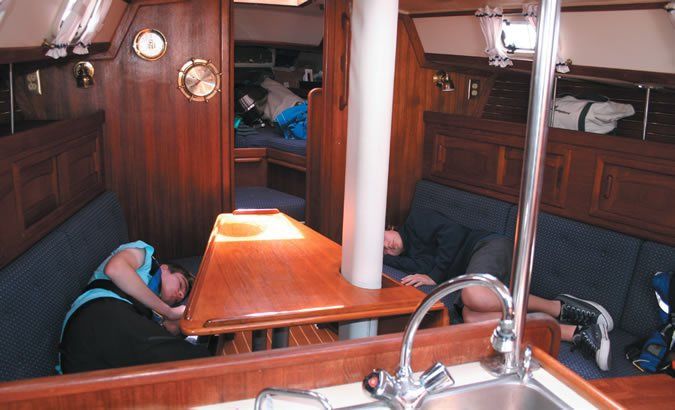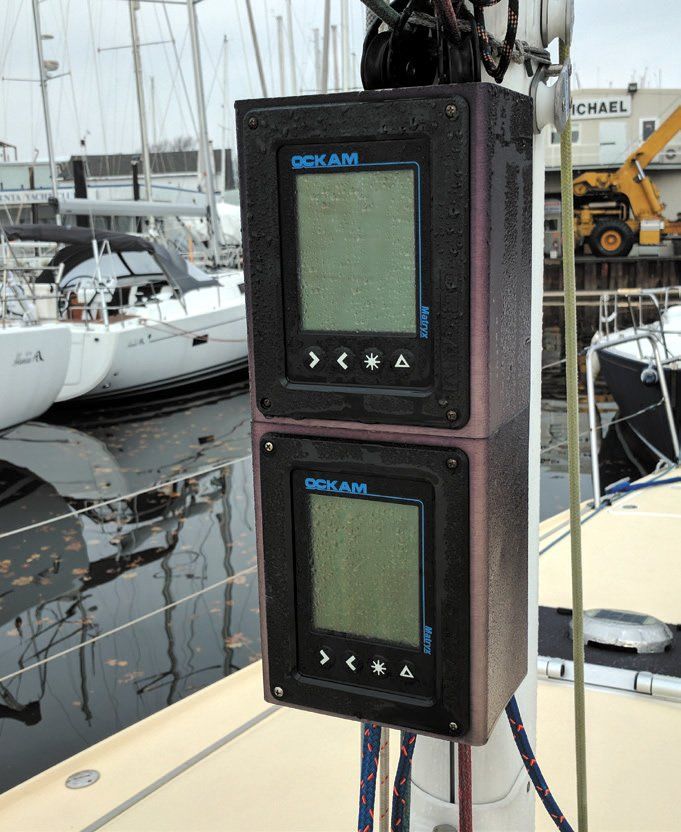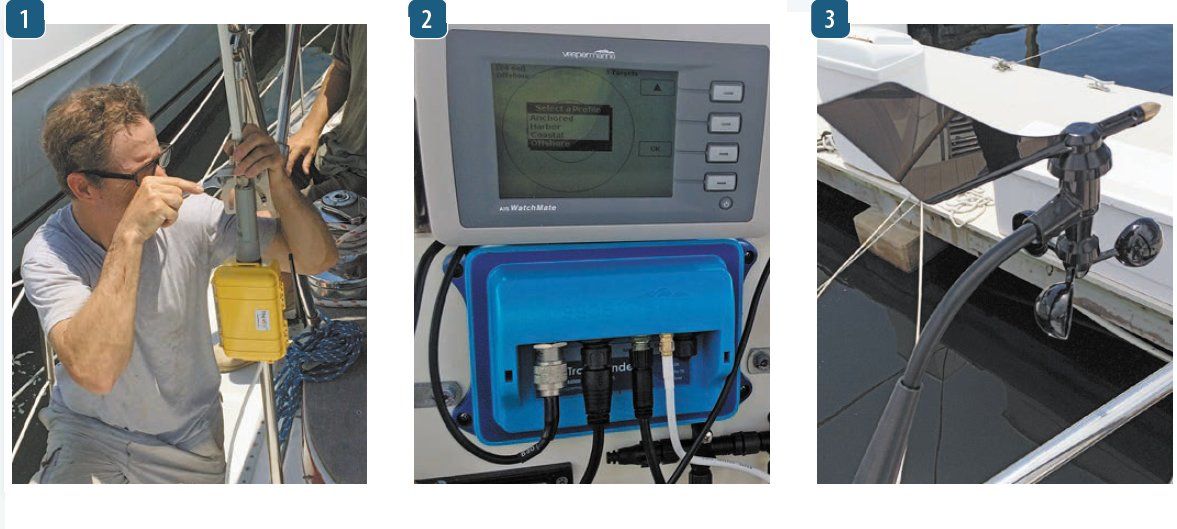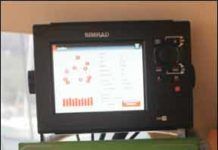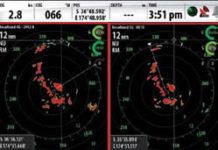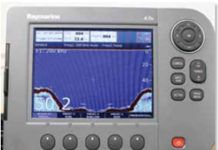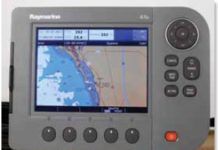Updating Onboard Electronics with N2K
A sailboat is no place for unnecessary complexity, which was the direction PS contributor Dan Corcoran was headed on his Beneteau 393, when it came to how data was passed between various marine electronics. The worst offender was a spaghetti network of point-to-point wiring that utilized the familiar National Marine Electronics Association (NMEA) 0183 standard. A few years ago, he embarked on a gradual replacement of NMEA 0183 wiring and components with the new standard, NMEA 2000. Here he offers his account of the upgrade and answers the oft-asked refit question: Was it worth it?
GoFree: Simrad Nav Goes Mobile
Being natural-born skeptics, Practical Sailor testers are always pleasantly surprised when we test gear that meets-or almost meets-the hype from its makers and marketers. And that was just the case with Navicos GoFree WiFi wireless networking device for Simrad products. We recently field tested it, and found that aside from a few niggles, the GoFree lives up to makers claims, is easy to install, and works well-straight out of the box!
Simrad Broadband Radar Comparison
Practical Sailor has been following the developments of Simrads broadband radar since the BR24s debut in 2009. Just as we were setting up a 3G BR24 for field testing, Navico (Simrads parent company) announced the release of the BR24 4G, which promised greater range and better target resolution at close range. A head-to-head test comparing the 3G and 4G broadband radar was impossible to pass up. Testers also compared the units to traditional pulse radar. Our test location just north of Sydney, Australia, was at the southern end of an ocean anchorage for large commercial vessels, about 600 feet long. Using a Simrad NSS7 for a display, we worked 7 nautical miles offshore to ensure the radar had a good view of the ships.
Touchscreen plotter-sounder test: Simrad NSS7 vs. Raymarine e7D
Practical Sailor recently had the opportunity to take a long-term look at the Simrad NSS7 multi-function display from Navico, and we compared it to a similar unit from Raymarine, the e7D. The test focused on the same elements as our past reviews of the Garmin 740s and Ray e7D chartplotter-sounders: installation, screen visibility, environmental tests, and plotter and sounder functions.
Raymarines WiFi Advantage
Raymarine has re-defined onboard interface with WiFi and Bluetooth capabilities in its new MFDs. Using an iPad or iPhone (Version 4 or newer), a Kindle Fire Tablet, or any Android Smartphone or Tablet, users can stream the e7D display to these devices using the RayView free app downloadable from iTunes, Amazon, or the Google Play Android store. This allows you to use these devices as a second display.
Raymarine e7 vs. Garmin 740s plotter-sounders
Practical Sailor evaluated the Garmin 740s chartplotter-sounder and other similar sized plotter-sounders in the November 2011 issue. For this follow-up report, we took a close look at the new Raymarine e7D. The Garmin 740s and the Ray e7D are similar in size, and both have a baseline plotter with sounder functionality, but the e7D has many new capabilities that include WiFi and Bluetooth interfaces witth mobile computing devices such as iPads and iPhones. The e7D is also capable of being fully networked with the other members of the new Raymarine chartplotter family and the C- and E-series widescreen units, while the Garmin 740s was designed as a standalone, multi-function display system.
Raymarine’s WiFi Advantage
Raymarine has re-defined onboard interface with WiFi and Bluetooth capabilities in its new MFDs. Using an iPad or iPhone (Version 4 or newer), a Kindle Fire Tablet, or any Android Smartphone or Tablet, users can stream the e7D display to these devices using the RayView free app downloadable from iTunes, Amazon, or the Google Play Android store. This allows you to use these devices as a second display.
PS Tests the Fish-finding Factor of Compact Plotter-sounders
In the November 2011 issue, we compared the chart-plotting features of four small-screen plotter-sounders from Garmin, Humminbird, Lowrance, and Raymarine. In this article, we look at the fundamental sounder functions of five plotter-sounders, priced from $700 to $1,500. The high-end products in this test, the Raymarine A70D and the Garmin 740S, have larger, high-resolution screens, can handle 3D charts, and are designed to network with wind instruments and autopilots. The smaller units were the Lowrance Elite-5, the Humminbird 788ci, and the Humminbird 798ci SI, which has side-imaging capability; these are marketed mostly to anglers. Units were tested for screen visibility, sounding capabilities, and user-interface.
Plotter-sounders Undergo a Battery of Tests
Fogging screens, water intrusion, poor visibility in bright sunlight, and slow redraw rates are the most common complaints we get regarding plotter-sounders. Better construction, new screen technology, and faster processors in our current crop of units seems to have addressed these issues. None of our products experienced serious problems during our environmental testing. Our tests focused on four key elements:
PS Tests Small-screen Plotter-sounders
Practical Sailor tested four small-screen chartplotter-sounder combo units priced from $700 to $1,500: Raymarine A70D, Garmin 740S, Lowrance Elite-5, and the Humminbird 798si. While there was a disparity in what features the units offer, the plotter-sounders were similar in terms of the GPS-based functions. Testers looked at ease of installation, ease of use, screen visibility, resistance to fogging, and water/spray resistance. They also compared features including price, man-overboard functions, waypoint and route storage, available charts, chart interface, and user interface. This article focuses on the electronics' chartplotter capabilities. The December issue will include the report on the devices' sounder functions.

































